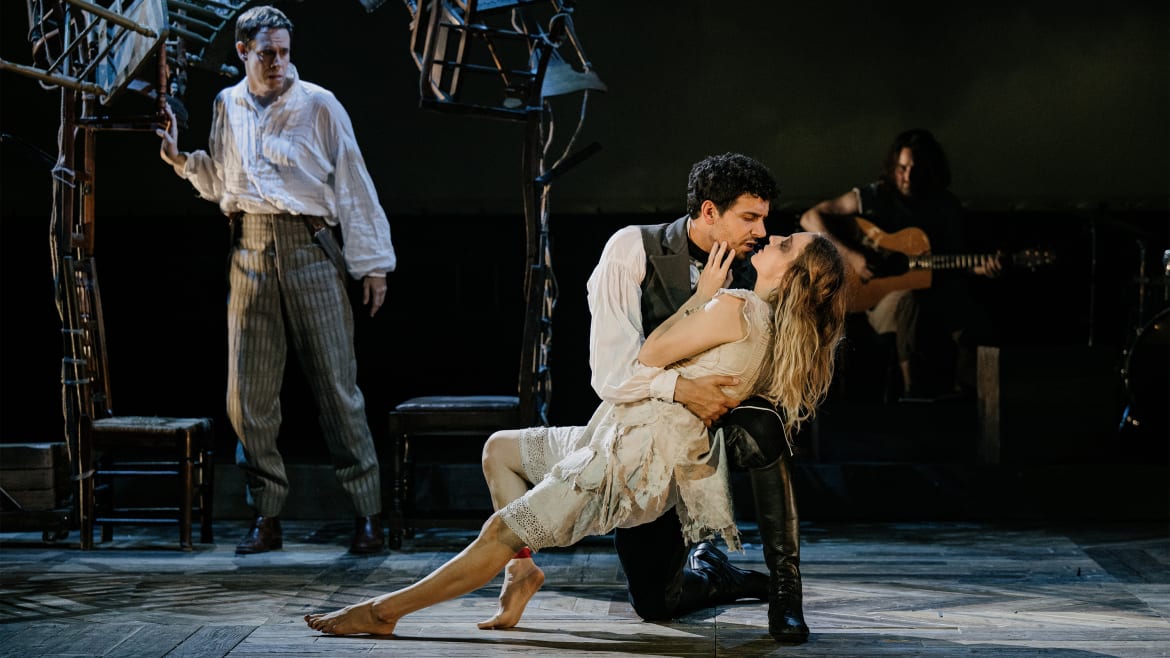How ‘Wuthering Heights’ Became a Mad Musical


On the decoration-free stage in front of us, with equipment, ladders, tools, and chairs for the actors to sit on when not in the scene, how will adaptor and director Emma Rice transport us to the roiling moors of Emily Bronte’s Wuthering Heights (St. Ann’s Warehouse, to Nov. 6)?
Anyone who knows the revered Rice’s radical, enveloping previous works of theater—like Wise Children, Brief Encounter, and The Red Shoes—know we need not fear. Everything playful and mischievous is thrown on to the tabula rasa in front of us to take us up to those forbidding hills, as well as a loud, percussive score. The production doesn’t do anything as obvious as play or even allude to the legendary Kate Bush track, but the production is just as determined to achieve a similar kind of immersive loopiness. British critics raved about this show, and the audience for the opening night this critic attended was fervent in its appreciation too.
Faithful to the book is a delight in its complication of character and plot. Sam Archer as Lockwood appears first, set upon by a vicious dog and general human unfriendliness, holding on to a door for dear life as the wind howls. He’s puzzled and tries to get any kind of physical and emotional grip on what is before him, as do we. The audience is offered character and plot summaries as Nandi Bhebhe (the leader of the Yorkshire Moors, a kind of narrator) tries to marshal the insanity unfolding from the pen of Bronte. The musical seems arch, ironic, and also serious—and the tonal shifts are confusing and unconvincing.




